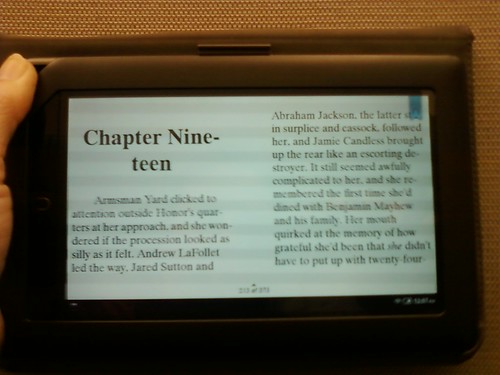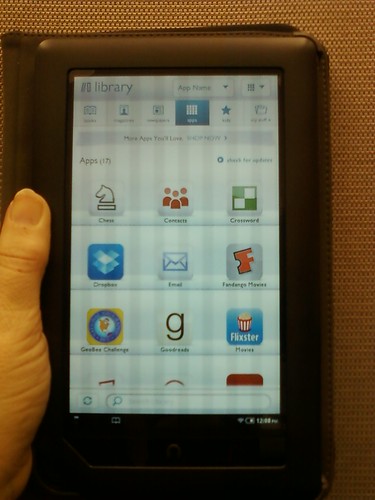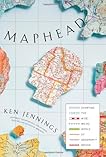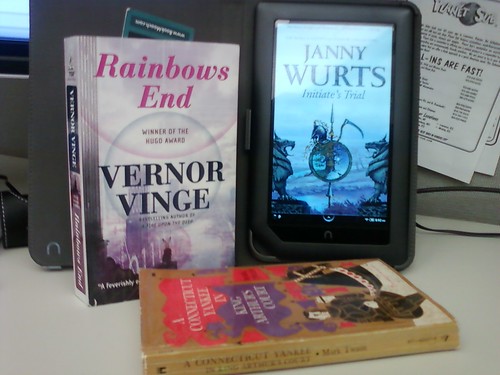 For the third day of my ‘Thirty Days of Thankfulness‘ I wish to express my appreciation of reading books. I can’t remember of a time when I didn’t know how to read, going clear back to when I was three or four years old. By the time I finished second grade, I believe I had finished all the Laura Ingalls Wilder Prairie books and started working through my mom’s old collection of Nancy Drew novels (printed in the 30s or before), as well as a few Hardy Boys and Trixie Beldon mysteries. I also remember reading Black Beauty and Little Women several times. Alice in Wonderland and Through the Looking Glass come to mind as well as some Jules Verne. I loved (and still re-read) C.S. Lewis Chronicles of Narnia and own a large hardcover omnibus edition, which I place prominently on my Shelf of Honor.
For the third day of my ‘Thirty Days of Thankfulness‘ I wish to express my appreciation of reading books. I can’t remember of a time when I didn’t know how to read, going clear back to when I was three or four years old. By the time I finished second grade, I believe I had finished all the Laura Ingalls Wilder Prairie books and started working through my mom’s old collection of Nancy Drew novels (printed in the 30s or before), as well as a few Hardy Boys and Trixie Beldon mysteries. I also remember reading Black Beauty and Little Women several times. Alice in Wonderland and Through the Looking Glass come to mind as well as some Jules Verne. I loved (and still re-read) C.S. Lewis Chronicles of Narnia and own a large hardcover omnibus edition, which I place prominently on my Shelf of Honor.
As I approached middle school age, I became exposed to other genres, including science fiction and horror. During my early teen years, I couldn’t read enough Stephen King. I still consider The Stand to be one of his best novels and a great example of post-apocalyptic fiction. But there came a point when the thrills paled and the terror became predictable. I did an about-face, a complete one-eighty and dived into epic fantasy. I have rarely, if ever, looked back.
Epic Fantasy Tomes
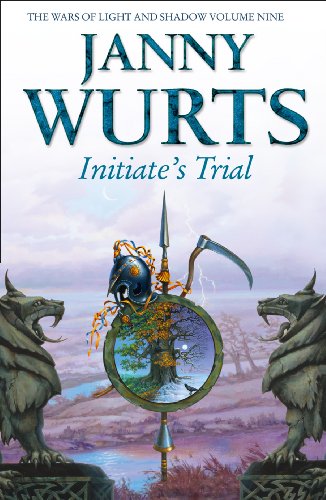 Why did epic fantasy appeal to me? The size of the books. Yes, I prefer tomes. The longer the book (or series), the happier I am. I read fast (not as fast as I did during my young adult hood, but still no slouch). Of the three novels shown in the photo above, the Janny Wurts novel on my Nook Color is the longest, weighing in at 749 pages. The classic, by Twain, and Vinge’s Rainbow’s End are actually approximately the same size in length: between 350 and 400 pages. If I put my mind to it, had few distractions, and really enjoyed the novel, I could finish either of the paperbacks in a day. Janny’s writing, however, is dense, rich and full of revelations and layers that require concentration. I will enjoy her prose for a minimum of ten days, and again in the future, because there’s always something new to find in her work when you re-visit it.
Why did epic fantasy appeal to me? The size of the books. Yes, I prefer tomes. The longer the book (or series), the happier I am. I read fast (not as fast as I did during my young adult hood, but still no slouch). Of the three novels shown in the photo above, the Janny Wurts novel on my Nook Color is the longest, weighing in at 749 pages. The classic, by Twain, and Vinge’s Rainbow’s End are actually approximately the same size in length: between 350 and 400 pages. If I put my mind to it, had few distractions, and really enjoyed the novel, I could finish either of the paperbacks in a day. Janny’s writing, however, is dense, rich and full of revelations and layers that require concentration. I will enjoy her prose for a minimum of ten days, and again in the future, because there’s always something new to find in her work when you re-visit it.
While Janny’s latest publication, the very recently released Initiate’s Trial, seems long to the casual reader at nearly twice the size of a normal paperback, to me it is a good sized epic fantasy novel.
The longest books I’ve read in the last three years include:
- Jonathan Strange & Mr. Norrell (read in 2009) ~ 1,024 pages
- The Way of Kings (read in 2010) ~ 1,007 pages
- The Wise Man’s Fear (read in 2011) ~ 994 pages
For more of my book stats, visit my stats page at GoodReads.



Book Clubs
I spent most of the 90s and the first half of the 00s raising children and helping my chronically ill husband all while working full-time. So basically, for a decade or a decade and a half, I stopped reading. Not completely, of course, because I read technical manuals and references guides for work and I occasionally picked up a novel off the new release shelf at the library. But I had blinders on and wasn’t taking advantage of the wealth of information available via the Internet.
 About three years ago, a friend on Facebook invited me to join GoodReads, a social network site for bibliophiles. I felt like I’d found the keys to the gates of heaven. I quickly found online book clubs that aligned with my readings interests, signing up immediately with the Science Fiction and Fantasy Book Club. That quickly followed with Beyond Reality (which seems to be my favorite place to hang out for the moment). Eventually, I joined (and now help moderate) the Fantasy Book Club and the sister group Fantasy Book Club Series.
About three years ago, a friend on Facebook invited me to join GoodReads, a social network site for bibliophiles. I felt like I’d found the keys to the gates of heaven. I quickly found online book clubs that aligned with my readings interests, signing up immediately with the Science Fiction and Fantasy Book Club. That quickly followed with Beyond Reality (which seems to be my favorite place to hang out for the moment). Eventually, I joined (and now help moderate) the Fantasy Book Club and the sister group Fantasy Book Club Series.
My awareness of reading and reviewing skyrocketed and pushed me to branch out in the ‘real world.’ Conveniently located in the building I spend 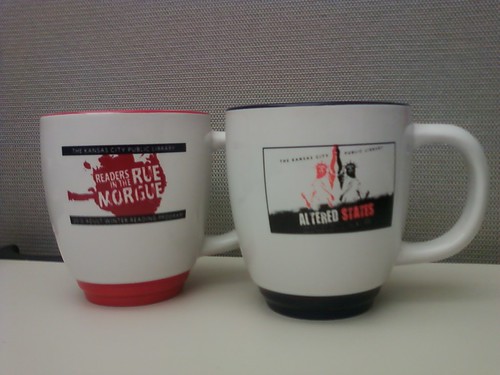 every weekday in is a branch of the Kansas City Public Library. I participated in reading challenges and seasonal book clubs, some of which I’ve written blog posts about here (including: ‘A Taste of Victorian Literature‘; ‘Altered States‘; ‘Readers in the Rue Morge’; and, ‘The Big Read‘ featuring Twain’s Adventures of Tom Sawyer).
every weekday in is a branch of the Kansas City Public Library. I participated in reading challenges and seasonal book clubs, some of which I’ve written blog posts about here (including: ‘A Taste of Victorian Literature‘; ‘Altered States‘; ‘Readers in the Rue Morge’; and, ‘The Big Read‘ featuring Twain’s Adventures of Tom Sawyer).
Accessible Authors
As if reading, reviewing and discussing novels wasn’t wonderful enough, the real icing on the cake comes from the authors themselves. Unlike in the 80s when I had to write a letter on a manual typewriter and snail mail it to one of my favorite authors with a question (I did this with Barbara Hambly, Piers Anthony and Stephen R. Donaldson – all of whom replied courtesy the self-addressed stamped enveloped I provided them), today’s authors write blogs, tweet via Twitter and participate eagerly at GoodReads either as discussion leaders or via dedicated Q&A topics posted for the chosen Book of the Month they wrote. Without their talent, imagination, perseverance and passion, I would have less to read, both in quantity and quality.
I highly recommend the following author blogs:
Back to the Future
I still love the heft of a heavy hardcover edition of a treasured classic epic fantasy … for about five minutes. I may have turned the final page of my last new hardcover. Any future purchases will be made solely to support a favorite author, with the hope of meeting the author and asking for their autograph on the title page. For the lion’s share of my reading, and to preserve both my weakening eyesight and the strain on my hands and arms, I will peruse the hundreds of novels and thousands of pages on my Nook Color ereader tablet, which is smart enough to turn off the light and mark my page when I doze off to sleep each night. Thanks again to my husband, for gifting me with this amazing product.
 The Machine Stops by E.M. Forster
The Machine Stops by E.M. Forster

